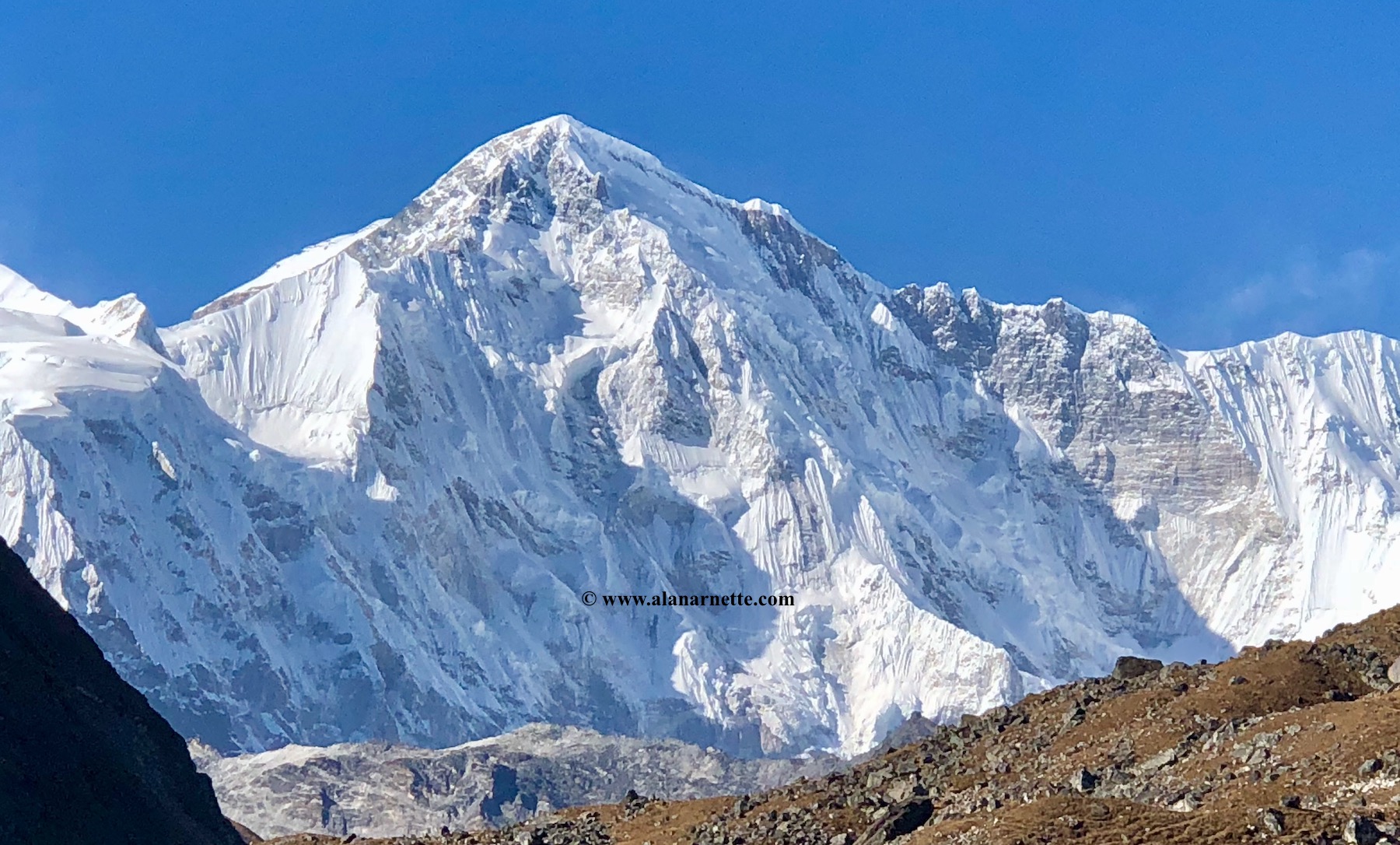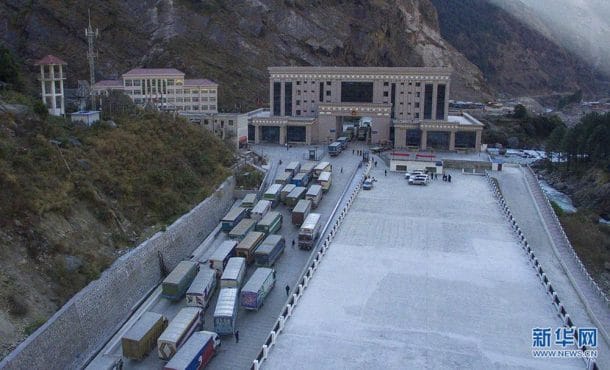Mother nature will not let up for the remaining efforts on Cho Oyu and K2. Attempts have been stopped by high winds and snow conditions. The end of winter is quickly approaching for the teams.
Nepal
There is a reason I don’t post daily on these efforts, not much is happening.
Winter Everest – Poor Weather Continues to Hold Jost Low
German climber Jost Kobusch trying a no Os solo attempt on Everest’s West Ridge is passing time at the lower villages waiting for a weather break. But it may become a moot point as his goal was never to summit but to tag 8000-meters. Thus far his high point is around 6464 meters above the Lho La pass. He sums up the moment:
But don’t get me wrong guys, even though it looks great in the pictures, it’s still very windy at the moment and has also become brutally cold.
Everest has seen only 13 winter summits for 371 attempts out of the total 10,656 summits. The last winter summit, defined by Nepal and the Himalayan Database as December through February was in 1993 by a very strong Japanese team led by Hikaru Hoshino on the SW Face (Bonnington Route). Polish climbers Leszek Cichy and Krzysztof Wielicki were the first on February 17th, 1980 via the South Col route with oxygen.
Please see this video interview I did with Jost a few months ago, where we discussed his plans in detail. He says his goal is to reach 8,000-meters and not the summit. You can follow him on Instagram, Facebook, and an excellent 3D view of his current location on his website.
Cho Oyu – Blown Back by the Wind Closer
Gelje Sherpa‘s team made a summit attempt but high winds forced them back. They are attempting to create a standard, commercial route on the Nepal side of Cho Oyu and has tagged 7400-meters on the 8188-meter peak.
Failure is not the end, we will try again until we meet success!
Even though we were alert that wind speed will be high after 12:30 pm this morning and the Jet stream was bringing up unpredictable weather over us in CHO OYU, we were meant to find out the best trail to reach the summit after climbing up the most technical vertical wall of this expedition, even we started 10:30 pm of last night where the temperature was below -30 degree Celsius, we all were giving our best for the summit push. But it nearly took us longer to fix the line on that vertical wall. We needed a few more hours to reach the summit as we were nearly at the elevation of 7600 but our whole team decided that we need to head back to the lower elevation soon as possible coz inside a few hours wind will start to hit hard on us.
So our team has withdrawn back to lower camps! We could see that we are close there but still, the main fact is I need everyone safely back home not just with the glory of the summit.But this is not over yet, we planned that we will wait for the next weather window and we will again head back for the summit. We will surely come back stronger after getting a break in basecamp for a few days.
Gelje’ team includes Pasang Tendi Sherpa, Lakpa Dendi, Chandra Tamang, Gesman Tamang, Tashi Sherpa, Phuri Kitar Sherpa, Ashot Wenjha Rai and Karma Sherpa.
Pioneer Adventures’s Mingma Dorchi Sherpa is also there trying to achieve the same objective – a commercial route from Nepal. The team includes Mingma Dorchi Sherpa -Team leader, Pemba Ongchhu Sherpa, Pasang Dorjee Sherpa, Mingma Dorchi Sherpa, Pasang Tenji Sherpa, Lakpa Thendu Sherpa, Phurbu Kusang Sherpa, and Karma Gyaljen Sherpa. They have made a few climbs on a different route than Gelje.
The Nepal side is rarely climbed due to avalanches and other objective dangers. Of the 3,923 summits on Cho, only 135 have been from the Nepal side. It will be interesting to see if any of the commercial guide companies use this new route in the prime spring or autumn seasons. The traditional Tibet-side route is considered very safe with little objective danger. While dealing with the Chinese is always a gamble, and the permit prices have gone up significantly in the last few years, most commercial operators are risk-averse and will want to use the safest route, even if it is more expensive. Perhaps this will be a route led by only a few Nepali companies wanting to distinguish themselves from the pack?
Pakistan
There is activity on K2 but still on the mid-highest of the mountains so they have a long way to go, especially in winter.
Winter K2 at Low Camp 3 on Summit Push
A strong Sherpa team made up of Chhiring Sherpa, Dawa Sherpa, Furi Sherpa, Ngimatendi Sherpa, and Ningma Dorje Tamang have established Camp 3 a bit lower than usual on K2. Located at 7,350 meters, they are expected to launch a summit bid from there once the weather allows. The effort is centered around Taiwanese climber Tseng “Grace” Ko-Erh with Dolma Expeditions. They gave this brief update:
(21st February, 2022) Six of the team members, including Grace Tseng and Nima Gyalzen Sherpa, have reached camp 3. They have been following the weather forecasts and moving accordingly. If the wind is low tomorrow, they plan to move towards camp 4. If the weather doesn’t favor them, they will wait there. For now, the team are planning to get to the summit on 24th February, if everything goes as planned. We hope for their safe and successful attempt.
They still have a long way to climb and the weather can change without warning. However, they have proven to suffer and maintain focus so we will see if they can pull off the second team summit of K2 in winter.
Climb On!
Alan
Memories are Everything
As a public service announcement, I’m passing on this invitation to participate in research for climbers who have had refractive eye surgery, such as LASIK or PRK.
Thanks
Alan
Exposure to high altitude after vision correction surgery poses a risk of developing a variety of issues ranging from dry eyes, light sensitivity, and nearsightedness, to rare, severe cases of near-blindness that were a contributing factor to the loss of life. Despite these reports, little is known about exactly how common these symptoms are.
Researchers at the University of Washington, the University of New Mexico, and the University of Tubingen are conducting a research survey to estimate how commonly vision changes occur while traveling to high altitudes after vision correction surgery. People who have had vision correction surgery are eligible to participate, whether they experienced visual symptoms or not. If you are eligible and choose to participate, you will find a link to the anonymous online survey at the bottom of this email. The survey will take less than 20 minutes to complete and does not require you to provide any personal information.
Participation in this study is voluntary. You may decline to answer any question in the survey. All the information you provide in the survey will remain anonymous and no one will be able to identify you from the information you provide in the survey. Although you will not benefit directly from this survey, we anticipate that information learned from the survey will help guide medical practice for future climbers traveling to high altitudes.
If you have any questions, feel free to email us at aluks@u.washington.edu, although please be reminded that the confidentiality of emails cannot be guaranteed. We appreciate your time and effort in completing this survey and look forward to reviewing the information you provide.
Click here to complete this survey: https://redcap.iths.org/surveys/?s=7L9NN7CHPH
If the link does not work, you can copy and paste it into your web browser.
PLEASE REMEMBER TO CLICK ON “SUBMIT” AT THE END OF THE SURVEY TO ENSURE THAT YOUR ANSWERS ARE ALL SAVED PROPERLY.
Sincerely,
Andrew M Luks, MD
Professor, Pulmonary, Critical Care and Sleep Medicine
University of Washington
Hans F Hurt, MD
Department of Emergency Medicine
University of New Mexico
Michael A LaBarbera, MD
Department of Medicine
University of Washington
Gabriel Willmann, MD
Professor, Department of Ophthalmology
University of Tübingen




